High Speed Flash Sync using the Phase One XF and Leaf Shutter Lenses
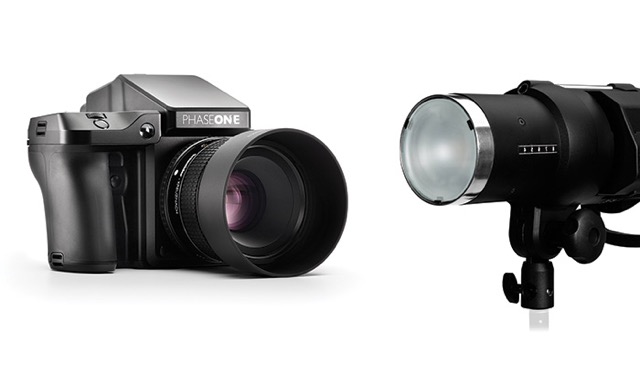
In addition to low vibration at the time of capture, the primary benefit of leaf shutter lenses are their ability to sync with the flash of a strobe system above the limits of the focal plane shutter.
On Phase One 645 cameras, the focal plane sync speed is at 1/125 and if you’re shooting a lens with no integral shutter, 1/125th is your limit for combining strobe with ambient light. In the studio where you have full control of your light on set, this is largely not an issue, but out on location, the ability to use strobe to fill and even overpower the sun is determined by your shutter speed. The only way to lower the contribution of the immensely bright, center of our solar system and producer of life point-light source traveling 93 million miles into your shot, is to limit its duration of its influence with higher shutter speeds, only then bringing your strobes in to fill the gap of light you’ve created.
At a given f-stop, you can limit this light through lower ISO’s or Neutral Density, but these methods put a larger burden on your strobe system to provide enough light. Through underexposure with a leaf-shutter, you can achieve a reasonable f-stop that allows your strobe system to have not only the quantity, but the quality of light you want in your image.
With any LS lens attached on to your Phase One camera, (and speaking in generalities, several other medium format cameras) the leaf shutter fires in every capture between 1 second and 1/1600th of a second. (for all Phase One mount Schneider LS lenses except the 40-80mm LS, 75-150mm LS & 240mm LS where maximum speed due to the larger shutter size in their barrels is limited to 1/1000th) For this topic of discussion we’ll focus on the speeds from 1/125 up to 1/1600th.
Flash Duration vs Sync Speed vs Triggering Method has already been well covered in the linked post and basically boils down to the fact that when the timing of these events are in the micro seconds, every advantage matters, so transmitters with the ability to be set to ‘FAST’ mode are crucial in maintaining the most flash output arriving to your captured image. As stated in that article:
“All radio signals take time to emit. Some are shorter than others. Generally, the 2.4GHz triggers, like the Broncolor RFS and Profoto AIR will be faster than the PocketWizard method. At X-sync, this doesn’t ever really matter; your exposure time plus the minuscule amount of time it takes for the radio signal to be sent and then processed combined will still allow you to catch that entire flash duration.
However…
When you start using extremely short shutter speeds that only capture a portion of the flash power emitted, you’ll notice a big difference between triggers, as when the remote flash actually begins firing has a huge effect on the effective light in your frame. Slower triggers will end up garnering you an exposure during the tail of the flash, meaning you get a lower sum total of flash energy, and a darker frame.”
https://www.captureintegration.com/flash-duration-vs-sync-speed-vs-triggering-method/
Speaking specifically of the Phase One 645 XF, the internal flash transmitter on the camera syncs using the FAST Profoto triggering protocol by default, so without adding any additional transmitter to the hot shoe, you’re already syncing at the fastest wireless speed possible. (way cool)
It should be noted that at low to moderate distances the difference between the XF internal transmitter and the Profoto Air Remote are indistinguishable from each other and in testing I found the Internal XF tested consistently well at 230 feet and started becoming variable at 280′ where the Profoto Air Remote still consistently triggered, but by 290′ the Profoto Air Remote started missing as well, this being considerably less than the 1000’ operating range claimed by Profoto. (This was by no means an exhaustive test, but was an exact ‘real world’ situation given a single transmitter and a single B1 strobe being tested.)
Moving forward we’ll be looking at specifically the Phase One XF, wirelessly triggering a Profoto B1 strobe head using the XF’s internal wireless transmitter and a 80mm Schneider LS lens.
The B1 is a fantastic portable, battery powered mono head with built in high speed remote triggering and 500w/s of power on demand. The flash duration is a very decent 1/1000th of a second measured by T.05 at full power, and as you would expect, you’ll see a falloff of flash captured when your leaf shutter exceeds that speed resulting in not all of the flash being output being recorded to your image. That isn’t the whole story, however.
The falloff actually begins much sooner and becomes noticeable around 1/320th of a second and drops about a 1/4 stop from an exposure shot at 1/125th and dropping another 1/4 stop by 1/500th where the loss plateaus until you exceed 1/1000th of a second leaf shutter exposure. Switching to the B4 pack and a Pro-7 flash head yields a 1/5000th flash duration when the output is matched to the B1 output and even at full power (1000 w/s) only drops a 1/4 stop total all the way to 1/1600th.
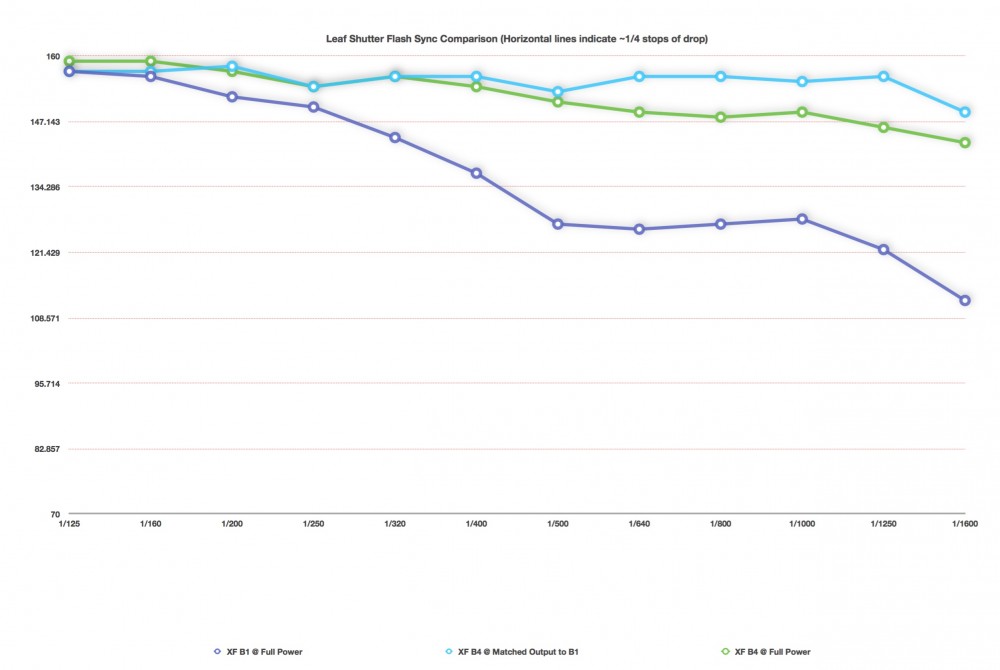
For sake of perspective, I also included an AC powered Broncolor Senso 1200 w/s pack with a Pulso G head, demonstrating the slower side of the flash duration spectrum, showing that while the B1 is slower than it’s considerably more expensive, B4 big brother, it is by no means dead slow in flash comparisons.
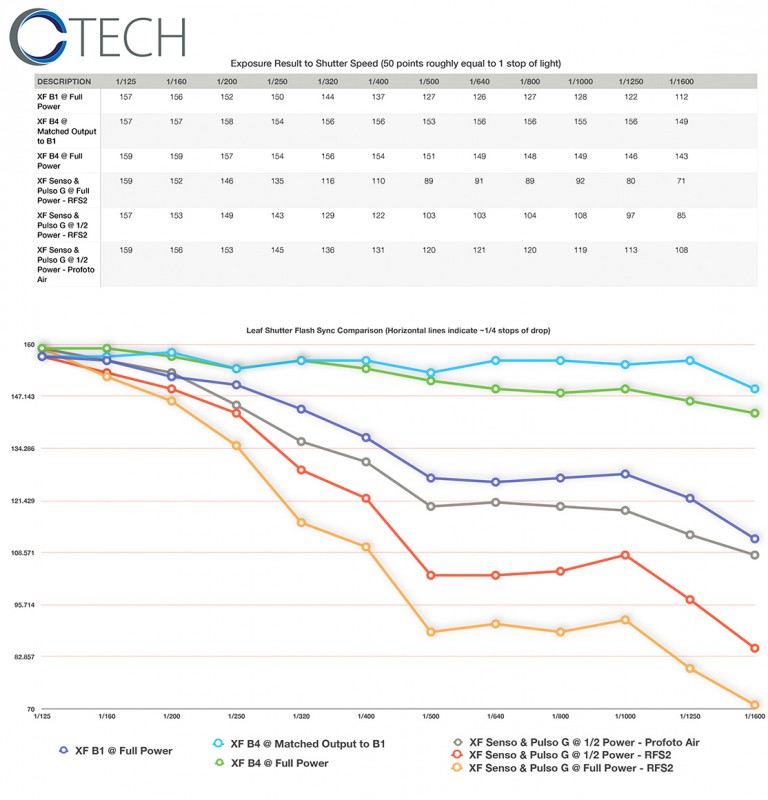
Per strobe system, the length of the total flash duration lowers (flash becomes quicker) as you lower the output of the system, and since flash duration was showing to be a considerable influence on the ability to catch the flash within the exposure time, I also tested the B1 at less that 100% output, shooting the leaf shutter at 1/1600th to good effect, especially when combined with the B1 ‘Freeze Mode’ where flash duration is optimized at the cost of slight output and color temperature variability.
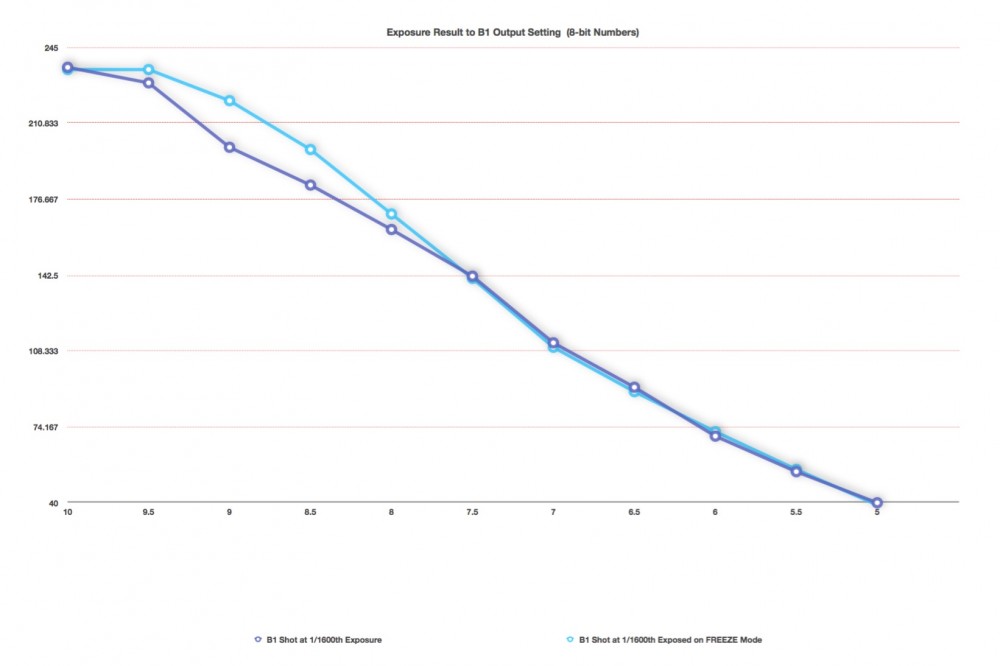
Reducing the output from 10 to 9.5 showed a negligible difference without Freeze Mode and with Freeze Mode enabled there was no drop in exposure to the capture at all. Even at the 9 setting which should manifest and an entire stop of exposure loss, the result only amounted to ~1/6th stop of darkening. Given the considerably faster recycle time and less drain on the battery, there’s very little reason to attempt to shoot the B1 at full power while syncing at 1/1600th. As I continued testing, it looked like the benefit remains the same for pretty much any exposure 1/400th or faster.
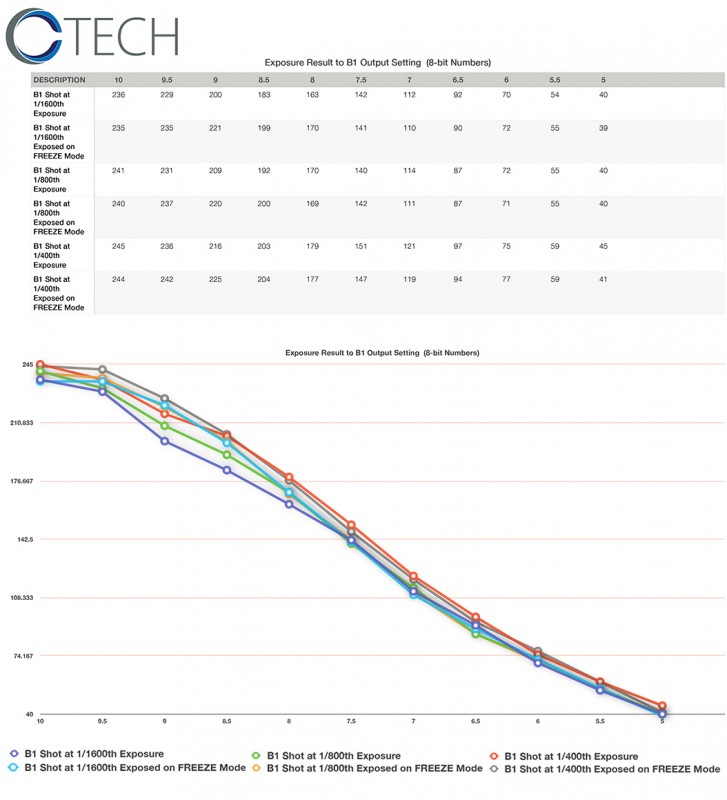
In the eventual 2nd part of this series, we’ll look at the real world effect of these findings and show you exactly what the stopping power of the shutter speed and the strobe flash duration, both isolated and combined, provides for your shot.



